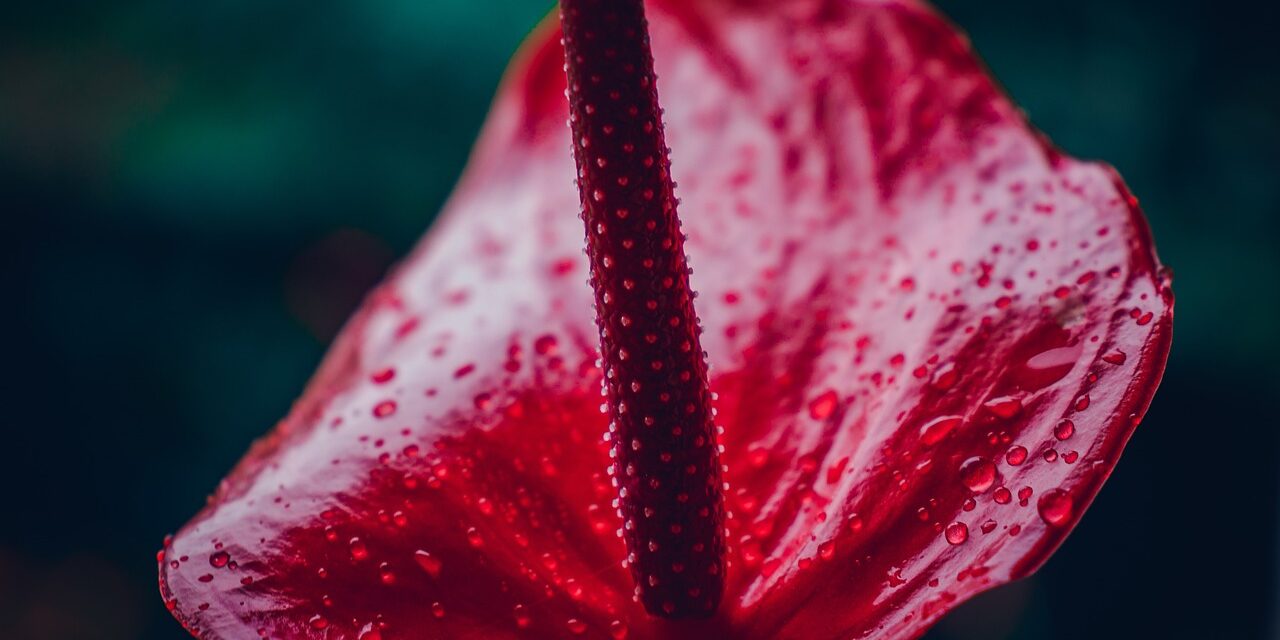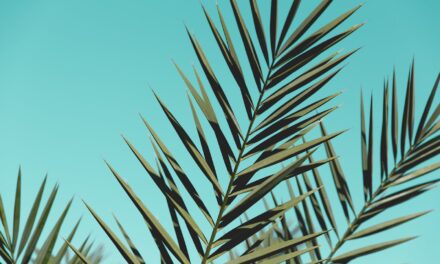Anthurium houseplants make a colorful, boisterous addition to any room in the home or office.
I still need to perfect the art of keeping Anthuriums thriving for an extended period. My home often gets a little too dry in the air, but I still love them anyways.
Their showy red flowers make me smile.
Table of Contents
Water, Lighting & Temperature for Anthuriums
Anthuriums come in three scientific varieties: A. scherzerianum, A. crystallinum, and A. andreanum.
- Water — You can give your Anthurium water every couple of days and let the surface of the soil dry out every so slightly between waterings.
- Light — Keep in bright, indirect light but protect from direct sun, as the Anthurium is prone to scorching on its leaves and flowers.
- Temperature & Humidity — Temperatures between 80-90 degrees Fahrenheit seem to be optimum for the Anthurium. Anything colder than 65 degrees or hotter than 90 degrees tends to make the Anthurium a bit grumpy. They require relatively moist air for humidity and love to be indirectly misted.
- Soil — Allowing soil to remain moist will help your Anthurium stay hydrated. But don’t let too much sitting water accumulate or let your plant get too sopping wet. This can promote mold, root rot and other issues.
- Propagation and Repotting — Anthuriums will spread at their base. You can divide them as they grow larger to repot and propagate.
Anthurium tends to be a bit pricier than other houseplants, so it’s a worthwhile investment to research and give your plant optimum care for a long life.
How do you care for anthuriums indoors?
The Anthurium is a tropical plant that is commonly kept indoors as a houseplant.
It is known for its bright, heart-shaped flowers, often red, pink, or white. The plant also has dark, glossy green leaves that are long and pointed.
Anthuriums are relatively easy to care for and can add tropical beauty to any indoor space. They prefer bright, indirect light and evenly moist soil and should be fertilized every few months during the growing season.
- Put your Anthurium in an area that gets bright, indirect light. Anthuriums prefer bright, indirect light but tolerate low-light conditions.
- Water the plant regularly. You want to keep the soil evenly moist but not soggy. Anthuriums prefer evenly moist soil, but they can tolerate some drying out between waterings.
- Fertilize the plant every few months during the spring and summer growing seasons with a balanced liquid fertilizer diluted to half strength.
- You can trim the long, trailing stems and propagate them to create new plants if the plant becomes overgrown. To propagate an anthurium, cut a stem with several leaves on it and put it in a jar with water until roots form. Then, plant the rooted stem in potting soil.
- Watch for signs of pests, such as spider mites or aphids, and treat them with an appropriate pesticide if necessary.
You want your Anthurium to stay alive for many years! Follow these steps and watch your Anthurium thrive.
How often do you water anthuriums indoors?
Anthuriums should be watered often to make sure the soil stays moist. But don’t let the soil get too soggy!
Water the plant thoroughly, allowing the excess moisture to drain from bottom of the pot, and then let the soil dry out a bit before watering again. You can water an Anthurium plant once or twice a week, but the exact watering schedule will depend on different factors such as the size of the pot, the type of soil, and the temperature and humidity in the room where the plant is located.
It’s important to check the plant regularly and water it when the soil is starting to feel dry to the touch.
Overwatering can lead to root rot, so it’s better to err on under-watering than over-watering.
Are anthuriums toxic to dogs and cats?
Yes, anthuriums can be toxic to dogs and cats if ingested.
The plant contains oxalate crystals, which can irritate and burn in the mouth and throat, causing excessive drooling, vomiting, and difficulty swallowing. In severe cases, ingestion of anthuriums can lead to difficulty breathing, tremors, and an irregular heartbeat.
If you think your pet has eaten any part of an anthurium plant, contact your veterinarian immediately.
It is vital to place your plant out of reach of pets and to supervise them when they are near the plant to prevent accidental ingestion.
Do Anthuriums like to be misted?
Anthuriums do not typically benefit from being misted.
In fact, misting the plant can actually do more harm than good. The leaves of anthuriums are naturally glossy and waxy, and misting them can cause the leaves to become waterlogged and develop brown spots or rot. In addition, anthuriums are tropical plants that prefer high humidity, but more than misting alone is needed to provide the level of humidity they need.
A better way to increase the humidity around an anthurium is to place the plant on a pebble tray filled with clean water or to use a humidifier. This will give the plant the moisture it needs without damaging the leaves.
Can Anthuriums have direct sunlight?
Anthuriums prefer bright, indirect light, but they can tolerate some direct sunlight.
Direct sunlight can be too intense for the plant and can cause the leaves to scorch or fade in color. It’s best to place Anthuriums where they’ll receive bright, indirect light. Like near an east- or west-facing window. This will provide the plant with the sunlight needed to grow and thrive without exposing it to intense, direct sunlight.
If you live in a super sunny climate, you may need to provide the plant with some protection from the sun, such as by placing it behind a sheer curtain or by moving it to a shadier location during the hottest part of the day.
Where are anthuriums from?
Anthuriums are native to the tropical regions of the Americas, including Central and South America, the Caribbean, and southern Mexico.
They grow in the understory of rainforests, where they receive bright, indirect light and high humidity. Anthuriums are popular as ornamental plants and are often grown as houseplants in temperate climates. They are known for their bright, heart-shaped flowers, often red, pink, or white.
The plant’s glossy, dark green leaves are also attractive and add to its tropical appearance.





